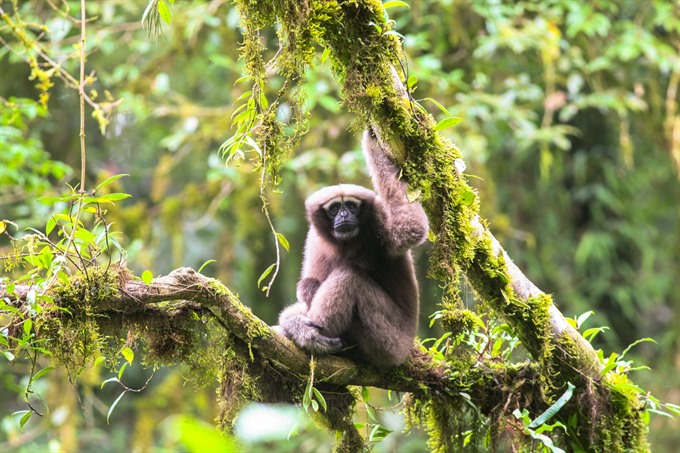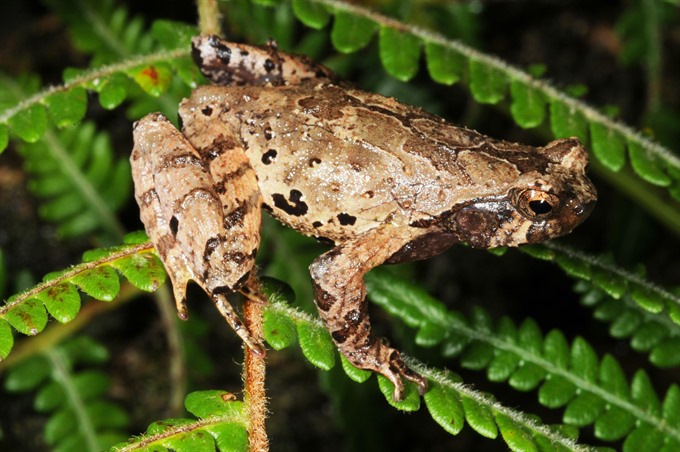 Environment
Environment

Scientists discovered 157 new animal and plant species in the Greater Mekong region last year, according to a report titled “New species on the block”.
 |
| Hoolock Gibbon is listed as one of the 25 most endangered primates on the planet. -- WWF Photo |
HCM City – Scientists discovered 157 new animal and plant species in the Greater Mekong region last year, according to a report titled “New species on the block”.
It describes three mammal, 23 fish, 14 amphibian, 26 reptile, and 91 plant species discovered in Cambodia, Laos, Myanmar, Thailand, and Việt Nam by scientists venturing into jungles, mountains, rivers, and grasslands, often in punishing conditions.
They included 58 in Việt Nam, including a tiny toad with sharp horns that was named after an elf due to its discovery in a foggy, mountainous, moss-covered ‘elfin forest’ in Việt Nam.
Its habitat and eyelid horns have led some to call it the “Toad from Middle Earth”.
A pancake-shaped catfish was found in fast flowing cold water in Myanmar’s remote Hponkan Razi Wildlife Sanctuary.
The new species include: a bamboo species in Cambodia’s Cardamom Mountains with a unique bulb-shaped base that grows along roadsides, a newly discovered Thismia herb species from Laos that is already endangered due to its habitat being leased out for limestone mining, a leaf-toed gecko discovered in Thailand’s Khao Sam Roi Yot, or “Mountain of Three Hundred Peaks,” with two distinctive stripes from its snout to the tip of its tail, Myanmar’s Salween River Basin mud snake, which is threatened by development and agricultural expansion in its habitat, and the Skywalker Hoolock Gibbon, listed as one of the 25 most endangered primates on the planet.
“There are many more species out there waiting to be discovered and tragically, many more that will be lost before that happens,” Stuart Chapman, WWF’s Asia-Pacific regional director for conservation impact, said.
“It doesn’t have to be this way. Ensuring that large reserves are designated for wildlife along with increased efforts to close illegal wildlife trade markets will go a long way to conserving the extraordinary wildlife diversity in the Mekong region.”
According to WWF’s most recent Living Planet Report, there has been a 60 per cent decline in the population of the world’s wildlife in the last 40 years.
In the Greater Mekong region, the decline is probably much worse given the large-scale destruction of wild habitats and the industrial-scale poaching in many parts of the region. -- VNS
 |
| A tiny toad with sharp horns that was named after an elf due to its discovery in a foggy, mountainous, moss-covered ‘elfin forest’ in Việt Nam. -- WWF Photo |




